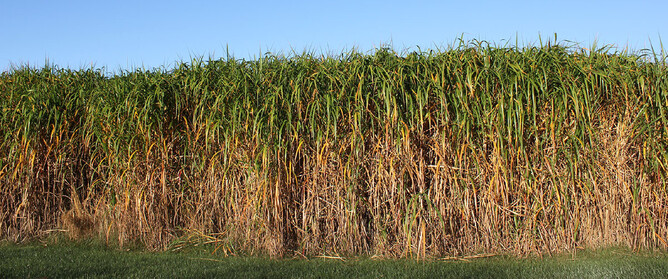Following the oil crisis of the 1970s, a search for ideal bioenergy crops began. This included research into the biomass yield potential of giant miscanthus.
Miscanthus x giganteus is now used commercially in Europe for bedding, heat, and electricity generation. Most production currently occurs in England but also in Spain, Italy, Hungary, France, and Germany.
In the United States, research began at the University of Illinois in 2001. The same plot design used in the Illinois trials was replicated across several states in 2008 and 2009 as part of the U.S. Department of Energy’s Regional Feedstock Partnership.
Miscanthus New Zealand (MNZ) set out in 2010 to establish a Miscanthus industry in New Zealand. One key objective was to assist rural landowners by providing a reliable alternative revenue stream that is not only environmentally friendly but is also better than carbon neutral. Knowledgeable international colleagues emphasised that it would take time to develop such an industry, but they were certain that it would take off eventually as it had already done so in the UK, Europe and North America.
With the support of key people it is likely that MNZ can expect to be planting a much more significant area of Miscanthus this year. A few mistakes have been made along the way, but MNZ has learned from those and will be rectifying those mistakes in the next growing season. Right now, MNZ is in the position where every bale of Miscanthus that it has in store is already committed. It seems that every piece of Miscanthus that MNZ will be able to produce from this coming winter’s harvest is also already committed. In fact, demand exceeds supply by quite a margin.
It is very interesting that the current demand is coming from people who have been evaluating Miscanthus and have come to the conclusion that it is what they want to use. Customers use Miscanthus for animal bedding – dairy, sheep and goat – even though there has been virtually no promotion of it done for this use to date. The other major potential use that was never planned for is for commercial mulch. This market is also extremely large and a commercial mulch Miscanthus trial that was done and completed by Lincoln University, was exceptionally successful. MNZ has not yet been promoting it for this use because we simply do not have the capacity to supply the product that will inevitably be required.
Energy uses were originally the intention of growing Miscanthus. They still exist and the potential scale is enormous, but with the level of demand for other uses that have a high value, these will only proceed if the energy users grow their own Miscanthus or contract others to grow the material for them. It is safe to say that the Miscanthus business in New Zealand is starting to take off.


